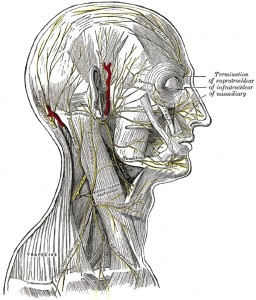By Sam McBride (Vanderbilt University)
While researching a paper on madness, I came across this statement on the brain in the 1792 essay A Review on the Subject of Canine Madness, “It is allowed by all that the brain is the only sensible part of the body, and that it is diffused over every moving fibre, in form of a sensible mucus” (Bourke, 6). This being a completely new theory to me, I attempted to trace it back to its source. Bourke attributed the theory to the surgeon Thomas Kirkland, who wrote in 1774, “the inside of a nerve is not a mass of fibres arising from the white part of the brain, but that it is a small portion of the white part of the brain itself, which is not fibrous, but the substance described.” (8). The substance described is a sensible mucus, which Kirkland supports by referencing the Swiss anatomist Albrecht von Haller, who, “when he saw it (the brain) without knowing what it was, it appeared to be ‘a mucus’ (7).
At this point the trail goes dead. Kirkland gives no indication as to where Haller wrote this, and I was unable to find that quote. As far as I can tell, no other references exist to “a sensible mucus”. Perhaps Kirkland was trying to create a physical model of Thomas Willis’ “animal spirits”. We may never know. It’s a theory lost to the dustbins of history, and a reminder that universal acceptance is a myth: no matter how prevalent the orthodoxy might be, there will always be dissenters like Kirkland and Bourke.
Works Cited
Bourke, Michael. A review of the subject of canine madness.
Philadelphia: Matthew Carey, 1792.
Kirkland, Thomas. A Treatise on Child-Bed Fevers, And On The Methods Of Preventing Them, Being a Supplement to the Books Lately Written on the Subject. London: 1774. 8-9. eBook.
Image: “The nervous system: a web of fibers or a ‘sensible mucus’?” Wikimedia commons.

